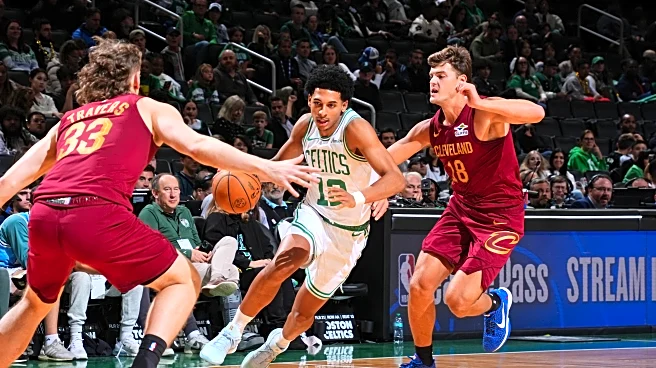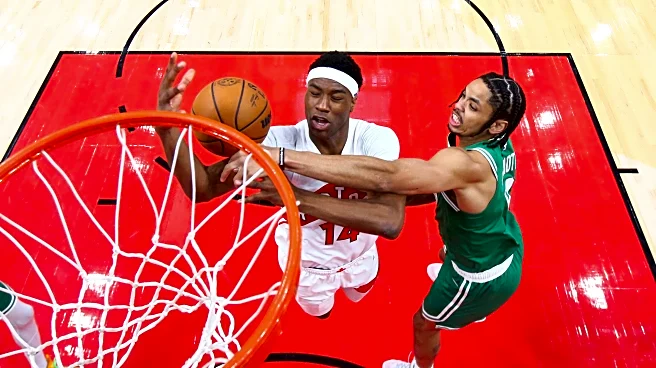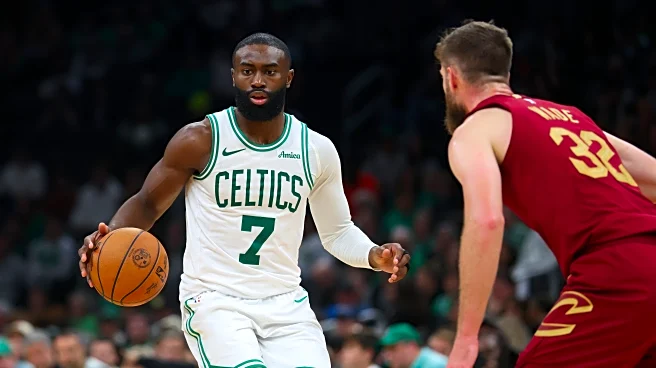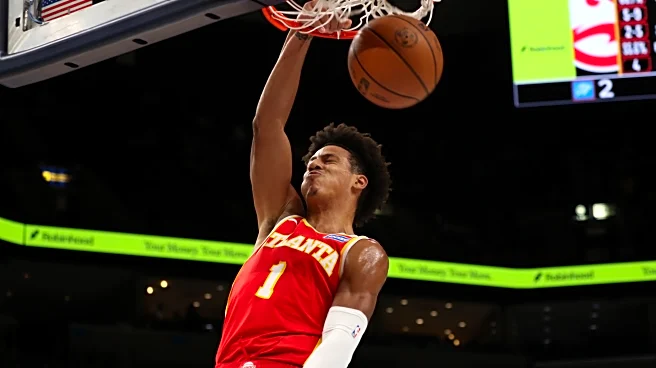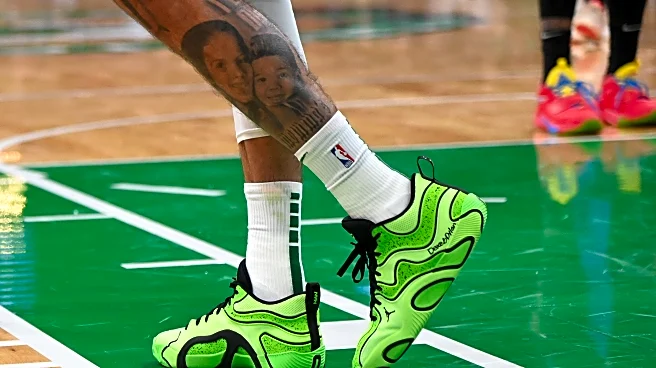What's Happening?
The Boston Celtics have decided to waive RJ Luis, a 6-foot-7 forward, just two months after acquiring him from the Utah Jazz. Luis was traded to the Celtics in exchange for two second-round picks and Georges
Niang. Despite being named Big East Player of the Year for St. John's, Luis opted to enter the 2025 NBA Draft rather than return for his senior season. His performance in the preseason with Boston was modest, averaging 3.2 points and 0.6 rebounds over three games. The decision to release him comes as the Celtics aim to refine their roster ahead of the regular season.
Why It's Important?
The release of RJ Luis highlights the competitive nature of NBA roster management, where teams must make strategic decisions to optimize their lineup. For the Celtics, waiving Luis may open up opportunities to explore other talent that better fits their strategic goals. For Luis, this move marks a pivotal moment early in his professional career, offering him a chance to seek new opportunities within the league. The decision underscores the challenges faced by new entrants in the NBA, where performance and fit are critical to securing a spot on a team.
What's Next?
RJ Luis will likely explore opportunities with other NBA teams or consider alternative paths such as the G League to continue his professional development. The Celtics, meanwhile, will focus on finalizing their roster for the upcoming season, potentially seeking players who can contribute more effectively to their game strategy. This decision may also prompt other teams to evaluate their own rosters and make similar adjustments as the season approaches.
Beyond the Headlines
The waiver of RJ Luis raises questions about the long-term development strategies of NBA teams and the pressures faced by young athletes entering the league. It highlights the importance of adaptability and resilience for players who must navigate the uncertainties of professional sports. Additionally, it reflects the broader dynamics of player trades and acquisitions, where teams must balance immediate needs with future potential.


